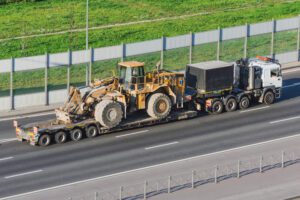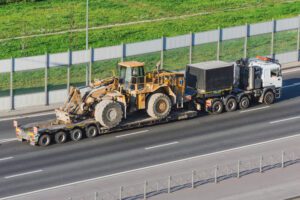How does the heavy machinery removal process work?


Heavy machinery can be exceptionally complex to deal with. From the initial installation process to keeping up with complicated maintenance schedules, there’s a lot that needs to be done to keep these crucial items operating as intended.
When you no longer need a piece of heavy machinery, or want to move it to another location, that complexity doesn’t just vanish. In this article, we take a quick look at how the heavy machinery removal process works, from removal assessments to transportation.
Removal assessment
Every single heavy machinery removal process will be slightly different, with slightly different challenges. As a result, the removal service you choose will need to start that process off with a thorough assessment, to check what kinds of tools and pieces of equipment they’ll need.
An assessor from somewhere like AIS Vanguard will come to the site and take a look at what they’re working with, how they’ll need to prepare the machine for removal, and what kinds of cranes or forklift trucks they’ll need to facilitate the extraction.
Preparation
Lots of heavy machinery will need to be prepared before it can be extracted. This might mean taking fuel out, disconnecting it from the electrical system, or taking it to pieces that can be handled and extracted more easily. Depending on the machine, this may take an extra few days to figure out, as well as a specialised team that has experience with that kind of equipment.
Extraction
Once the machinery has been prepared, it should be ready for extraction. Again, how this is done will depend on the machine and the location that it’s in. For example, a machine right next to an access road will require a different approach compared to a machine in the basement of a huge factory. Either way, this will all have been figured out and arranged during that initial assessment period, and shouldn’t be too difficult to manage with the right preparation.
Transportation to the final location
Once the piece of heavy machinery has been extracted from its location, it’s ready to be loaded onto a vehicle and taken away from the facility. Which vehicle will be most suitable will depend on the piece of machinery in question, and you’ll have to work with a specialist removal team to figure out which option to use.
This aspect of the logistics process will take a lot of planning – the route needs extra planning if the vehicle is oversized, and you’ll have to determine a safe disposal or storage location for your machine to end up in.
It’s critical that you work with the right kind of extraction team throughout this process, to get it done in a safe, secure and legally compliant manner. There are a lot of things that can go wrong with heavy machinery extraction, resulting in potentially extensive financial damage and danger to human life. It takes time to plan it well, but in the end, it will always be worth it.
Read more:
How does the heavy machinery removal process work?








